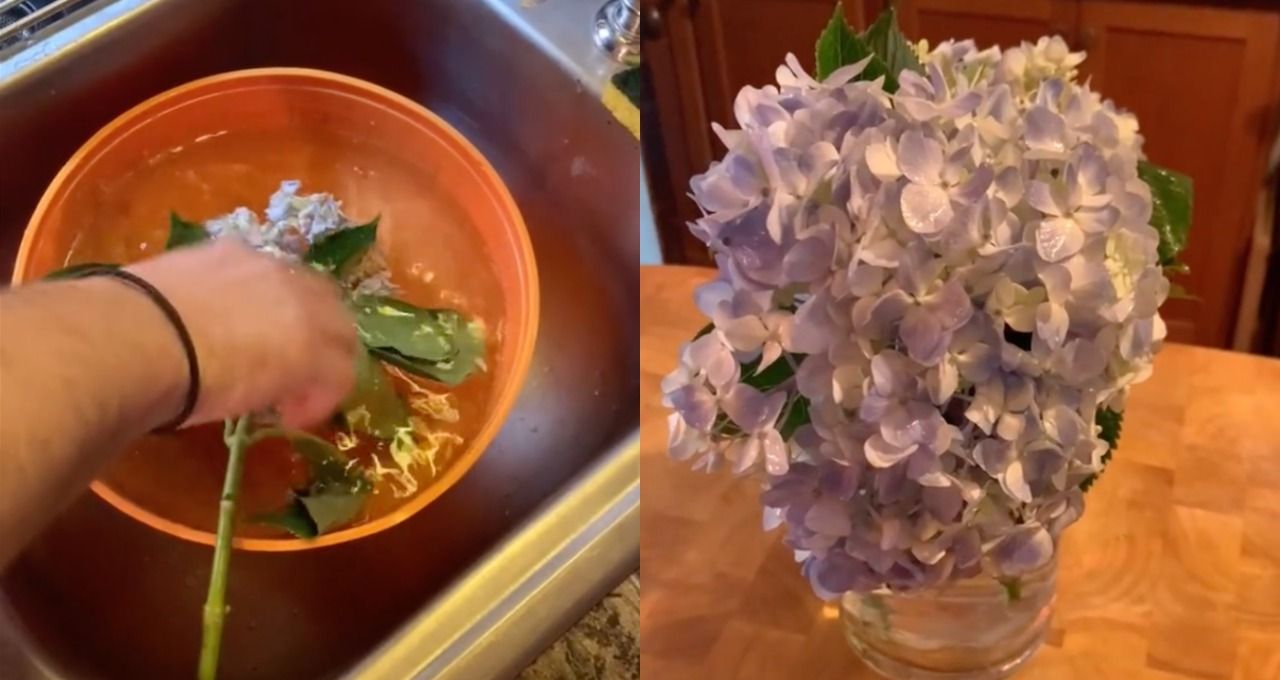Hydrangeas are prized for their large, showy blooms that come in shades of pink, blue, purple, and white. With their full flower heads and pretty foliage, it’s no wonder they are a coveted landscape plant. However, hydrangeas do require proper care and watering for optimal growth and flowering. Overwatering is one of the most common mistakes made by hydrangea growers.
Signs of an Overwatered Hydrangea
Too much water can quickly lead to issues for your hydrangeas. Here are some signs that your plant is getting more water than it needs
-
Wilted or drooping leaves – Overwatered hydrangea leaves will be soft and limp rather than crisp Leaves may start to turn yellow or brown as well,
-
Fewer flowers – Excess moisture prevents flower buds from forming properly. You may get small flower heads or sparse blooming.
-
Smaller leaves and stunted growth – Constant wet roots inhibits nutrient uptake leading to poor growth.
-
Rotting roots – Waterlogged soil causes roots to rot and turn brown or black. They will feel mushy to the touch.
-
Fungus on soil – A sure sign excess water is present is the growth of gray fungal mold on the surface of the potting mix.
-
Leaf drop – Severely overwatered hydrangeas will drop many of their leaves as the roots decline.
How Often to Water Hydrangeas
Hydrangeas need consistent moisture in the soil to thrive. But you can definitely overdo it with water which does more harm than good. Here are some general guidelines for hydrangea watering:
-
Potted hydrangeas – Check soil moisture daily. Water when the top inch becomes dry, being careful not to saturate the soil.
-
In-ground hydrangeas – Established plants need about 1-2 inches of water per week, including rainwater. Check soil a few inches down to gauge moisture.
-
New plantings – Water more frequently for the first season, about 2-3 times per week until well established.
-
During drought – Increase frequency when soil dries out faster. Prioritize watering in morning.
-
After planting – Water thoroughly after planting and mist leaves for a few weeks to reduce transplant shock.
-
During rain – Reduce watering after heavy rains and rainfall. Soggy soil can suffocate roots.
Best Practices for Watering Hydrangeas
Follow these tips to hydrate your hydrangeas properly without overwatering:
-
Water deeply – Hydrangeas have deep roots so you need to saturate the soil. Shallow watering leads to roots staying near the surface where they can dry out.
-
Water at soil level – Avoid getting water on the leaves which can encourage diseases like powdery mildew.
-
Use soaker hoses or drip irrigation – These provide low, regulated flow directly to the soil and roots. Overhead watering often oversaturates.
-
Water in morning – Watering early in the day allows excess moisture time to evaporate from the leaves decreasing risk of fungus.
-
Add mulch – A 2-3 inch layer of mulch helps lock in soil moisture so you water less frequently.
-
Check drainage – Make sure pots and garden beds drain well to prevent waterlogged soil.
-
Reduce in rainy periods – When Mother Nature waters for you, you likely don’t need to supplement as much.
-
Check soil frequently – Use your finger to gauge moisture before adding more water.
-
Water at base – Avoid getting the foliage and flowers wet to discourage fungal diseases.
Correcting Overwatered Hydrangeas
If you suspect your hydrangeas are overwatered, here are some tips to get them back on track:
-
Stop watering – Allow the potting mix or garden soil to thoroughly dry out before watering again.
-
Add more organic matter – Mix in compost or peat moss to improve drainage and aerate the soil.
-
Cut back watering – Reduce frequency and quantity when you resume watering.
-
Relocate plant – Move potted hydrangeas to a sunny spot so the soil dries faster.
-
Loosen and dry roots – Remove from pot and gently hose away soil to inspect roots. Cut off any diseased ones and repot.
-
Prune damaged foliage – Removing dead or dying leaves and flowers prevents further issues.
-
Apply fungicide – Treat any fungal growth with an organic fungicidal spray.
-
Be patient – It takes time for overwatered hydrangeas to recover. Proper care and reduced watering will help.
-
Add gravel drainage – Place a gravel layer at the bottom of pots to improve drainage.
Final Thoughts
It is certainly possible to overwater hydrangeas. Too much moisture around the roots leads to a myriad of problems that will impact flowering and plant health. Careful attention to soil moisture, drainage, and watering frequency is key to prevent overwatering issues. Check plants regularly and simply allow the soil to dry between waterings. With proper hydration, your hydrangeas will continue growing and blooming beautifully all season long.
Overwatered Hydrangea
FAQ
How often should I water hydrangeas?
What do hydrangeas look like when they are overwatered?
How do you know if your hydrangea has too much water?
Can hydrangeas tolerate a lot of water?

